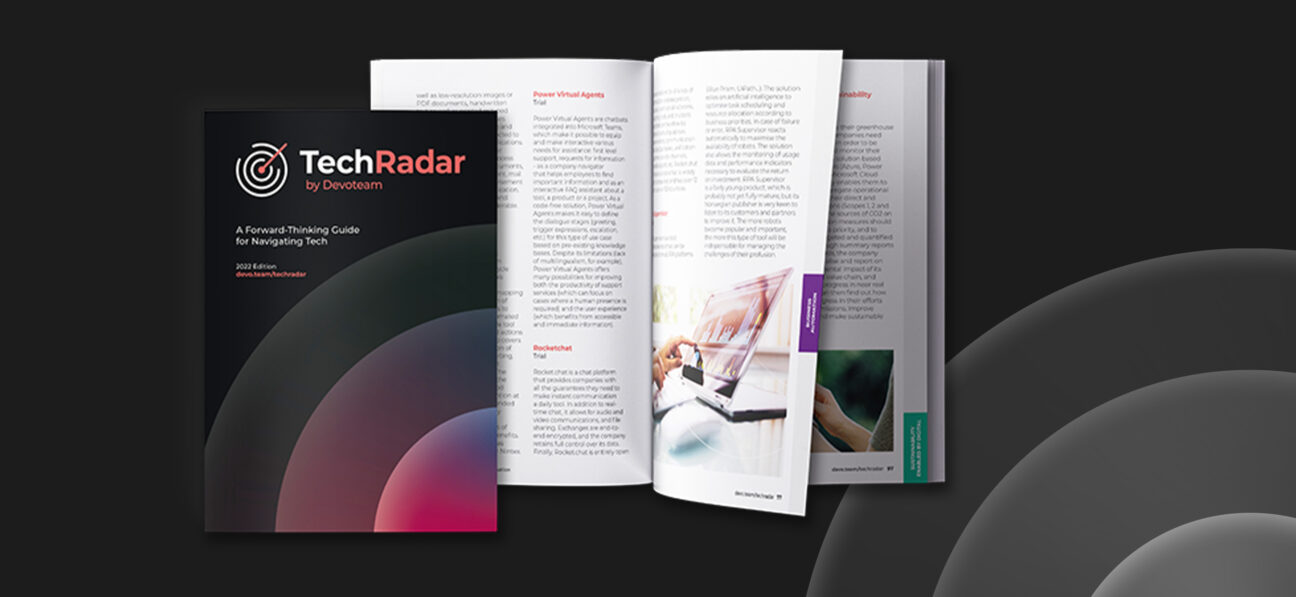Anyone working with containerized environments is likely to be familiar with Kubernetes (also referred to as K8s), as one of the most powerful container orchestration solutions available today. But when it comes to application deployment and management, it’s also one of the most notoriously complex, which has led to a rapidly growing ecosystem of tools designed to resolve the complexities of application deployment on the platform.
Released in 2016, Helm emerged to mitigate the difficulties of working with applications in Kubernetes by providing users with an effective, easy-to-use solution to streamline and simplify application management across the entire lifecycle.
In this article, we’ll take a closer look at the importance of Helm in working with Kubernetes, how the technology functions, and the major challenges the tool solves.
What is Helm?
For the purposes of this article, it is helpful to consider Kubernetes as an operating system – and in this instance, Helm acts as a package manager. Whereas Ubuntu and CentOS use apt and yum respectively, Kubernetes uses Helm, providing users with greater control of their Kubernetes cluster using Helm Charts, which enable users to define, install, and upgrade complex K8s applications with ease.
Developed by container tooling company, Deis (now part of Microsoft) and Google, Helm is an open-source solution released in 2016 as part of Kubernetes 1.4 and is a graduated project supported by the Cloud Native Computer Foundation (CNCF).
Why do we need Helm?
As we mentioned earlier, Kubernetes objects are notoriously challenging to manage, but why? To get a better understanding of the value that Helm brings to the table, let’s take a closer look at the standard process of application management in Kubernetes without the help of a tool like Helm.
In order to configure a Kubernetes workload, users rely on YAML files that specify everything needed for deploying containers – from each Pod configuration to how load balancing is accomplished by the cluster, etc. Therefore, setting up a new Kubernetes workload requires users to spend a significant amount of time manually writing a YAML file for all workloads that need to be created.
By contrast, Helm automates the maintenance of YAML manifests for Kubernetes objects by consolidating information into charts and advertising them to a Kubernetes cluster. Depending on the organization’s needs, these applications can be sourced from open-source repositories or from their own repository of customized blueprints.
In essence, working with Helm makes application deployment easy, standardized, and reusable, which in turn increases developer productivity, reduces complexity, improves operational readiness, and accelerates the adoption of cloud-native applications.
How does Helm work?
Helm functions as a client/server application. Previous versions of the tool, namely Helm 2, rely on Tiller (the Helm server), whereas Helm 3 uses the Kubernetes API, which receives requests from the client and installs the package into the Kubernetes cluster.
Similar to RPM or DEB packages in Linux, Helm provides developers with a convenient way to package and ship applications for end users to install. Once Helm has been installed and configured, users can use a single CLI command to install production-ready applications within a Kubernetes cluster, or remove them as needed.
What do Helm Charts include?
Helm charts are reusable packages of YAML files and templates consisting of collections of versioned, pre-configured application resources that are then converted into Kubernetes manifest files and can be deployed as one unit.
Helm charts consist of three basic concepts:
- Chart – A preconfigured template for Kubernetes resources.
- Release – A chart that is deployed to a Kubernetes cluster using Helm.
- Repository – An arsenal of publicly accessible charts.
The general workflow involves searching through repositories for relevant charts and installing them to Kubernetes clusters. Upon executing the Helm install command, a server receives the incoming request and installs the appropriate package in the Kubernetes cluster, creating a release.
What are the main challenges that Helm solves?
Now that we have a better understanding of Helm functionality, let’s explore a few of the biggest Kubernetes pain points the tool solves:
- Developer productivity
Developers typically spend a great deal of time deploying test environments to test code and replicate customer problems, but with Helm, they can deploy test environments with a click of a button, allowing them to focus their efforts on developing applications.
For example, let’s say a developer wants to test a new feature, for which they will need an SQL database. Rather than going through the tedious process of installing the software locally and creating the databases and tables required, the user can simply utilize a single Helm Install command to automatically create a test-ready database.
- Shortening the learning curve
By now, it’s no secret that the learning curve for Kubernetes is on the steeper side for the average developer, which can result in high lead times to deploy production-grade apps on the platform. Helm eliminates the need for users to have an in-depth understanding of Kubernetes objects in order to develop and deploy container applications.
Helm Charts offer a “push button” approach to application deployment and deletion and can be integrated seamlessly into CI/CD pipelines, making adoption and development of Kubernetes applications more accessible for users with limited container or microservices experience.
- Deployment complexity
One of the biggest pain points of working with Kubernetes is the complexity of the application deployment process. By using Helm Charts, developers can integrate production-ready packages into their applications, eliminating the risk of deployment errors due to incorrect configuration file entries or mangled deployment recipes.
Additionally, Helm Charts enable developers to preconfigure their applications with sensible defaults and customize application configurations during deployment. By providing configurations for all Kubernetes resources included in the application and configuring the environment-specific requirements for those resources, developers are able to reuse one Helm chart across multiple environments.
- Production Readiness
Kubernetes applications consist of multiple components including pods, namespaces, RBAC policies, and deployments, which often makes deployment and maintenance challenging and prone to error.
With Helm Charts, Kubernetes App Catalogs become easier to maintain. For instance, developers don’t have to maintain service tickets during application deployment or manually consolidate App Catalogs, which come included as part of a self-service portal.
- Duplication of Efforts
Because Helm Charts are sharable and reusable within and across an organization, DevOps teams can avoid duplicating efforts, while increasing efficiency and reducing the risk of error. The Central App Catalog additionally reduces duplication and spreads best practices by encoding them into Charts which can be adjusted and deployed in any environment.
Furthermore, Helm automatically maintains a database of all versions of releases, meaning that should something go wrong during deployment, rolling back to the previous version can be done with a single command.
How can I learn more?
This article is part of a larger series focusing on the technologies and topics found in the first edition of the TechRadar by Devoteam . To see what our community of tech leaders said about the current position of Helm in the market, take a look at the most recent edition of the TechRadar by Devoteam .

Want to know more about Helm?
Check out TechRadar by Devoteam to see what our experts say about its viability in the market.
